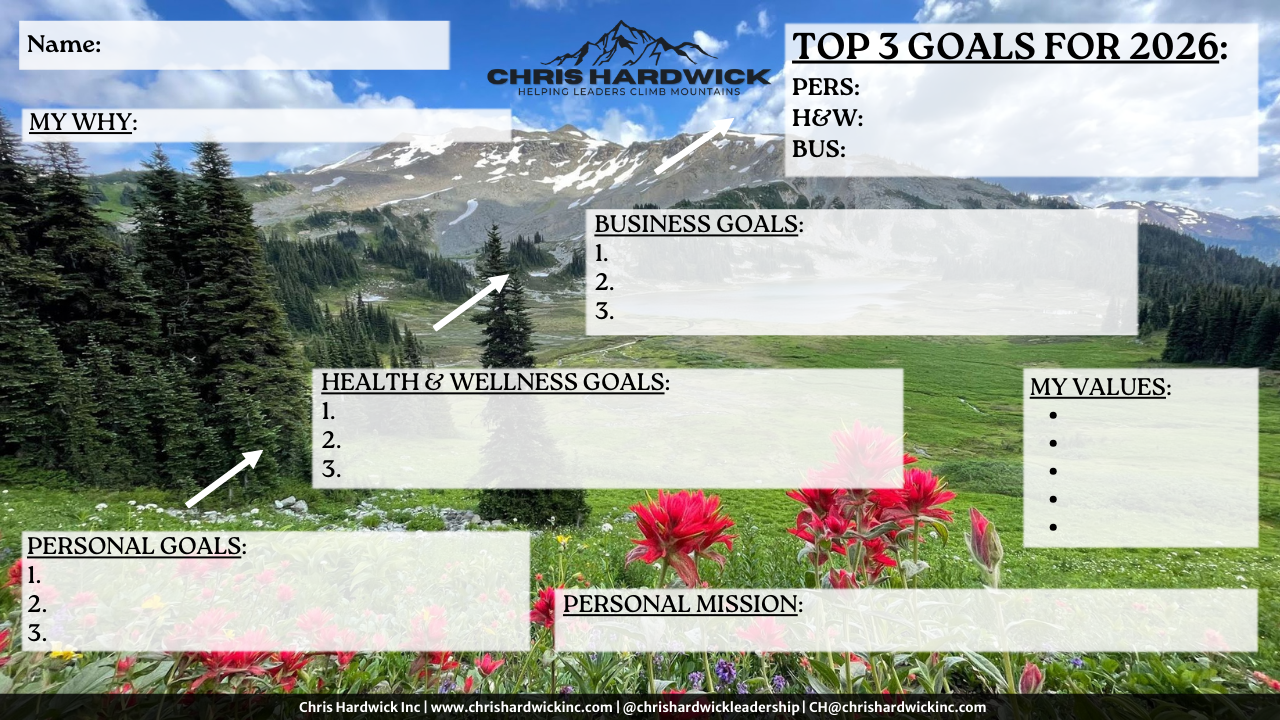“Dave, I just had to fire Fred!!”
A few months before we’d hired one of the top equipment operators in the City. Fred (not his real name) was a big man, larger than life jovial character, who was fun to be around. It had taken me years to get this guy. Watching him operate a big 30T Excavator like it was an extension of his hand, his amazing ability to pick up the tiniest things with the bucket and thumb. Watching him masterfully navigate his way around multi million dollar equipment was an absolute delight.
Unfortunately, Fred consistently refused to wear all of his PPE = Personal Protective Equipment (Helmet, Gloves, Safety Glasses, Fireproof Coveralls and Steel Toed Boots) every time he stepped out of the excavator. He would carry his helmet in his hand, his glasses were sitting in his top front pocket, his gloves were hanging out of his back pocket, his coveralls were unbuttoned exposing his belly. I was constantly getting calls from the Refinery Plant Manager to deal with Fred.
As a company we were not doing a great job of:
- Setting clear expectations
- Establishing the right procedures
- Providing regular feedback
- Encouraging ownership
- Being transparent, and
- Measuring performance.
After making numerous trips to the site, the Refinery Manager forced me to give Fred a Verbal warning. Two weeks later I was back on site again to give Fred a Written warning. A week later I was forced to let him go after only three months with my company.
Bottom line, he was not following the required processes and systems that had been established by our Client and in our company and we needed to hold him accountable regardless of how great an operator he was. I was extremely disappointed with this outcome, as was Dave, my Senior Superintendent and other leaders, as they all knew how important Fred could have been for our company's success.
We were not going to stop holding employees accountable. We were not prepared to change our approach to the importance of the Safety Culture we had spent years building in the company. An interesting outcome occurred. Over the following months several of my employees commented on how they were impressed with my ultimate decision to let Fred go and that it had subsequently improved our Safety Culture even more.
Accountability is a crucial element in the workplace that ensures that everyone in the organization understands their role, commits to their responsibilities, and delivers on their promises. It plays a pivotal role in strengthening trust, improving performance, and driving business growth and success.
Often, businesses struggle with accountability within their teams due to unclear expectations, lack of communication, inadequate performance measures, or a lack of ownership among team members.
Drawing from two decades of leading my own businesses and executive coaching experience, we'll look at six actionable strategies and tips to help you on this journey. Let's explore how you can transform your organization through accountability and drive your business forward.
Step 1: Setting Clear Expectations
With my Operator, we failed to explain the importance of wearing PPE at all times and how this might impact our relationship with one of our major customers.
One of the ways I like to begin is by defining what Success Looks like, otherwise how will we know if we have achieved it?
To foster accountability, leaders should clearly define and communicate expectations to their direct reports. This includes expected completion date, allowable budget and most importantly the definition of success.
Using clear, concise language when communicating expectations reduces misunderstandings and failure to achieve the desired result.
Updating expectations should be ongoing, especially as roles and responsibilities may change during projects or people career development. Regular meetings can effectively keep the relevant parties informed and accountable.

Step 2: Implementing the Right Processes and Systems
Implementing processes and systems establishes a formal responsibility structure within your organization, which can range from team check-ins to project management software or detailed reporting systems.
Companies need to have an Organizational Structure, generally captured on an Organization Chart that identifies the individual, their roles, responsibilities and reporting structure. The reporting lines need to be clear. Expectations and job requirements need to be spelled out in an Employee Agreement with roles, responsibilities and scope of work clearly defined, making it easier for everyone to understand what they are being held accountable for.
Choose a mechanism that aligns with your organization's needs and culture. For instance, a tech startup might benefit from a project management tool, while a manufacturing company may prefer a detailed reporting system. The key is to select a system that's easily understood and manageable by all team members.
After choosing a suitable mechanism, ensure effective implementation by training the team to use it correctly, consistently, and productively. Be patient as everyone adapts to the new system, and periodically review it to ensure it serves its purpose, making adjustments as needed. The goal is to create a system that enhances accountability and drives business objectives.

Step 3: Providing Regular Feedback
Feedback promotes workplace accountability by helping everyone grow and improve, which drives the team and business towards success.
Fostering accountability isn't just about pointing out mistakes; it also involves recognizing and celebrating successes. Recognize and reward employees who consistently demonstrate good performance through public recognition, promotions, or incentives. Recognition reinforces positive behavior and motivates other people to lift their game.
Feedback should not be one-way; encouraging team members to provide feedback to leaders and peers fosters open communication. This can be facilitated through regular meetings or specific tools.
I’m a big fan of monthly 121 meetings between supervisors and their direct reports.
Step 4: Encouraging Ownership
The relationship between ownership and accountability is direct and significant. When employees feel ownership of their work, they are more likely to be accountable for the outcomes, transforming them into active stakeholders in the company's success.
Involving employees in decisions, from minor operational changes to strategic planning, makes them feel valued and encourages ownership.
Empowering direct reports to come up with their own solutions to issues or opportunities will likely result in more ownership and better results.
Assigning individual projects that match employees' skills and interests and avoiding micromanagement also promotes ownership, as they actively contribute to the business's success.
Micromanagement can be toxic in organizations, since this implies a lack of trust by the supervisor of their direct report. Supervisors need to learn how to ask better questions and not be providing the answers all the time.
Step 5: Promoting Transparency
Encouraging openness among team members is essential. Create an environment where employees can ask questions, express opinions, and share ideas through regular meetings and open-door policies. When team members feel heard, they are more likely to take ownership of their tasks and responsibilities.
Leaders promote transparency by sharing relevant information with their team, including business objectives and performance metrics. This helps team members understand their roles, clarifying expectations and responsibilities.
This is where monthly 121 meetings are a fantastic way of getting to know your direct reports better and sharing information with team members.
Additionally, leaders must encourage and facilitate team accountability by creating a safe environment for risk-taking, admitting mistakes, and seeking help. Providing support and guidance helps team members take responsibility for their actions and results.

Step 6: Measuring Performance
Many leaders waste time measuring the wrong stuff. What makes you money? Figure that out in each department, then determine what needs to be measured and how to measure it.
A performance measurement system provides tangible evidence and accountability of an individual's or team's work output, tracks progress, identifies areas for improvement, and rewards successful goal achievement.
To ensure accountability we require performance measurement tools. These can be measured daily, weekly or monthly.
- DAI’s = Daily Activity Indicators
- KPI’s = Key Performance Indicators (KPIs)
- Balanced Scorecards.
Choose a method that aligns with your business objectives and team dynamics. For instance, a sales team may use sales targets as a performance metric, while a customer service team might use customer satisfaction ratings.
I’m a big fan of daily DAI’s and weekly KPI’s that can roll up into a 12 month rolling average. This will provide trends allowing you to determine if you are trending up or down and make the necessary adjustments quickly.
One of the problems with KPI’s is that they are often top down driven, from the Owner or Supervisor and not always what really needs to be measured or accepted by the employee.
What we are really looking for is the required activities, and this is best measured using DAI’s to track and monitor employees daily activities that will subsequently lead to the desired results required to meet the KPI’s.
The frequency and method of performance evaluations also matters. Regular reviews allow assessment of employee work, discussion of objectives, and goal-setting. These reviews should be structured, systematic, and involve both the employee and their supervisor.
Effective performance measurement should be coupled with guidance, support, and resources for employees to meet their targets.
Suggested Reading:
Interested in some further reading, some of my favorite business classics:
- Dr Stephen Covey - 7 Habits of Highly Effective Leaders
- Dale Carnegie - How to Win Friends and Influence People
- Chris Voss - Never Split the Difference
How Can I Help?
With a wealth of experience spanning over 20 years in leading successful businesses and executive business coaching, I help entrepreneurs and business leaders like you through tailored strategies that are designed to address your unique business needs and challenges. We target core areas such as setting clear expectations, measuring performance, providing regular feedback, encouraging ownership, promoting transparency, and implementing effective accountability mechanisms.
Contact me at chris26hardwick@gmail.com or book via Calendly and let's take on this journey together.




















